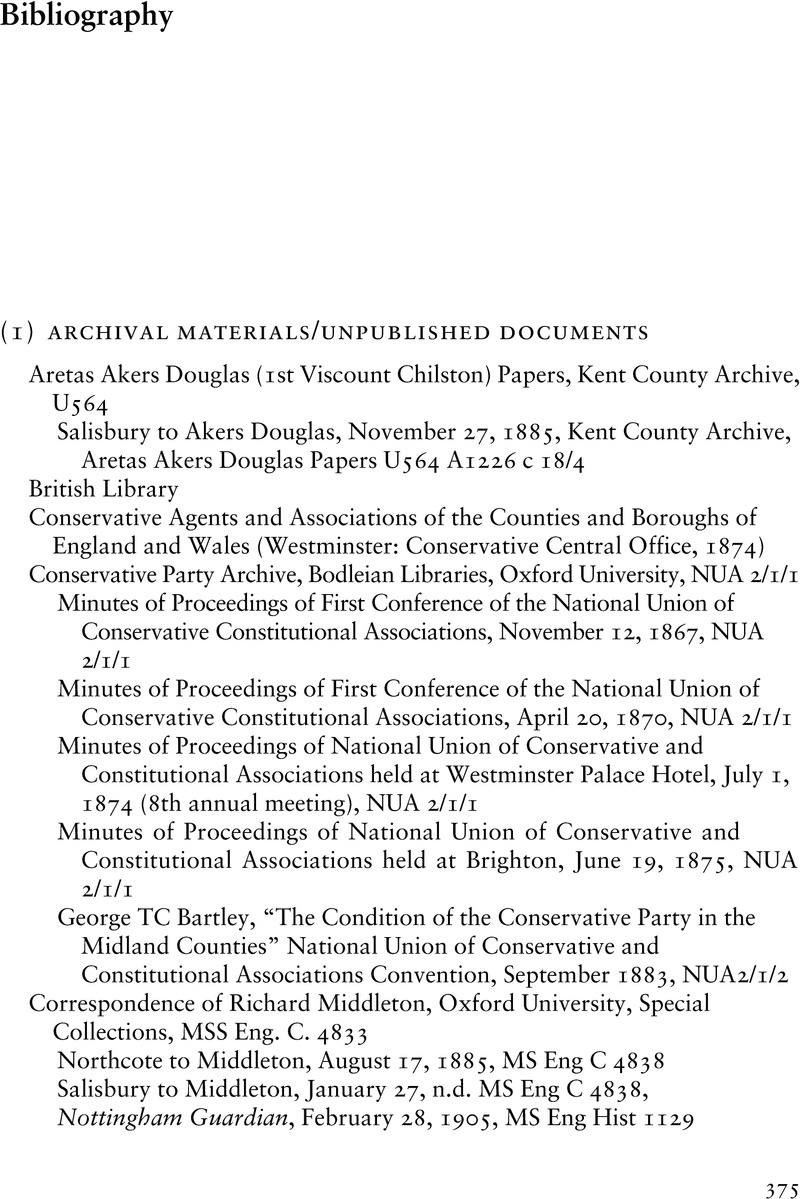Book contents
- Conservative Parties and the Birth of Democracy
- Cambridge Studies in Comparative Politics
- Conservative Parties and the Birth of Democracy
- Copyright page
- Contents
- Figures
- Tables
- Preface
- Acknowledgments
- 1 Two Patterns of Democratization
- 2 The Old Regime and the Conservative Dilemma
- 3 From 1688 to Mass Politics: British Democratization
- 4 A Virtuous Cycle? Conservative Strength and Britain’s Settled Path, 1884–1906
- 5 Averting a Democratic Disaster in Britain, 1906–1922
- 6 Weak Party Conservatism and the Case of Germany
- 7 Stalled Democratization in Germany Before 1914
- 8 The Unsettled Path: Conservative Weakness in Weimar Germany, 1918–1928
- 9 A Deluge: Conservative Weakness and Democratic Breakdown in Germany
- 10 How Countries Democratize: Europe and Beyond
- 11 Conclusion
- Book part
- Bibliography
- Index
- Other Books in the Series (continued from page ii)
- References
Bibliography
Published online by Cambridge University Press: 17 April 2017
- Conservative Parties and the Birth of Democracy
- Cambridge Studies in Comparative Politics
- Conservative Parties and the Birth of Democracy
- Copyright page
- Contents
- Figures
- Tables
- Preface
- Acknowledgments
- 1 Two Patterns of Democratization
- 2 The Old Regime and the Conservative Dilemma
- 3 From 1688 to Mass Politics: British Democratization
- 4 A Virtuous Cycle? Conservative Strength and Britain’s Settled Path, 1884–1906
- 5 Averting a Democratic Disaster in Britain, 1906–1922
- 6 Weak Party Conservatism and the Case of Germany
- 7 Stalled Democratization in Germany Before 1914
- 8 The Unsettled Path: Conservative Weakness in Weimar Germany, 1918–1928
- 9 A Deluge: Conservative Weakness and Democratic Breakdown in Germany
- 10 How Countries Democratize: Europe and Beyond
- 11 Conclusion
- Book part
- Bibliography
- Index
- Other Books in the Series (continued from page ii)
- References
Summary

- Type
- Chapter
- Information
- Conservative Parties and the Birth of Democracy , pp. 375 - 410Publisher: Cambridge University PressPrint publication year: 2017

